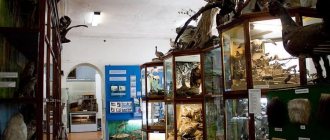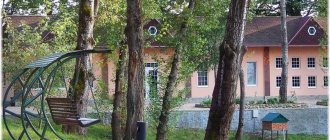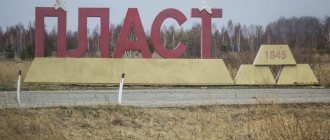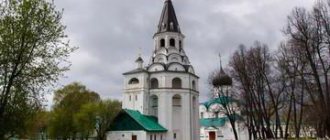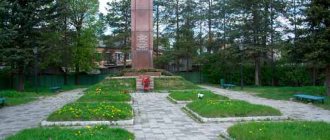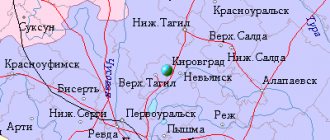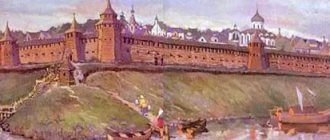On the elevated bank of the majestic Ob River lies the city of Barnaul, the capital of the Altai Territory. Established by the will of the famous industrialist A. Demidov in 1738 with the construction of a silver smelter here, it began to develop rapidly in the 19th century, turning over the years into a large industrial and commercial center of Steppe Altai. Despite its relatively young age, it can surprise you with its unique 19th-century buildings and modern monuments, and captivate you with the beauty of its historical quarters, built in the image of St. Petersburg. Photos with a brief description of the attractions will help you create a program of excursions around the city.
Architectural monuments of Barnaul
The main attractions of the city date back to the 19th and early 20th centuries. They create a picturesque portrait of the city, being its decoration and guardians of history.
House under the spire
The visiting card of the city of Barnaul, decorating advertising brochures, postcards and guidebooks, is called the House with a Spire, built in 1956, in the architecture of Soviet neoclassicism.
The building, 31 meters high, is topped with a tower on which the clock shows the exact time. A 15-meter sharp spire with a weather vane shoots upward from the tower. Unfortunately, now it does not show the direction of the wind due to the wear and tear of the rotation mechanism. The external walls of the house are decorated with original decorative plaster made of stone with the addition of mica. The famous house stands on Lenin Avenue.
Museum "City"
At the corner of Lenin Avenue and Tolstoy Street, you will involuntarily stop in front of a beautiful old building with amazing decoration, appearing in an abundance of small figures of different shapes. This is the former city hall, built in 1914-1916. Its facade is decorated in a contrast of white and red, using whitewash on brick in individual decorative elements. The structure is topped with a cone-shaped dome, characteristic of the architecture of that time.
Since 2007, the former town hall has housed a city museum, a visit to which will be useful for children and adults. Here, the history is presented in various exhibits and documents, starting from the mining village founded by the industrialist Akinfiy Demidov, to the merchant city, and further to the large industrial and cultural center of the region.
Theological school
The two-story stone building of the Theological School, located on Lenin Avenue, is a landmark of the late 19th century.
The building was erected in 1869 in the style of classical religious architecture. After a fire in 1917, it was reconstructed, after which the original appearance was significantly changed by combining different architectural styles. The facades of the school are designed in the traditions of Russian church architecture of the 18th century with pseudo-baroque decor and appear before us as they were 100 years ago.
Shadrin merchant house
On Krasnoarmeysky Prospekt, a wooden building of the 19th century, built in the Art Nouveau style, attracts attention - the Shadrin merchant house.
Among the surrounding buildings, it stands out for its skillful façade with graceful fences on the loggias and patterned carvings of the window casings. The 2nd floor loggia ends with a tower with two tiers, ending with a tent with a lantern and a decorative trefoil. During Soviet times, the merchant's mansion was occupied by an orphanage, and now it houses the Russian Tea cafe. This fabulous-looking house is included in the list of architectural monuments of federal significance.
"Barnaul skyscraper"
In 1915, on Kuznetskaya Street (now Gogol Street) the first Barnaul “skyscraper” appeared - this is how amazed residents called the house built by merchants D. Aleinikov and N. Averin, which became the first “high-rise” of Barnaul. It is a four-story and five-story building connected by a passage. The houses are built of red brick in architecture close to the Renaissance. The facades do not have clear floor markings, but each floor is distinguished by individual decoration and openings that stand out in white on a red background.
House of Polyakov - Yakovlev
The most architecturally valuable of the Barnaul merchant mansions is the corner building at the intersection of Gorky-Korolenko streets, which has survived unchanged from the beginning of the 20th century to the present day.
It was built in Art Nouveau style with baroque details in the external decor. The design of the facade, made in the contrast of white and red, is admirable. The presence of arched and round windows, protruding architectural forms on the facade and chains supporting the canopy, forged fences, as well as artistically crafted balcony railings and window grilles give the house an extraordinary charm.
Intercession Cathedral
The Intercession Cathedral is the oldest Orthodox church in Barnaul. It was built in 1869 in the style of ancient Byzantine architecture. A few years after the revolution, the church was closed by the authorities. Its activities were restored by decree of Stalin in 1942. At the end of the 90s of the last century, the cathedral underwent reconstruction and acquired four thrones.
Inside the temple there are interesting oil paintings on the walls, copying biblical scenes painted by Russian artists. The temple rises on Nikitina Street, 137.
St. Nicholas Regimental Church
St. Nicholas Regimental Church was erected at the beginning of the 19th century according to the design of military churches, as a single-nave rectangular structure with a bell tower in 3 tiers and a portal in the western part of the facade. The temple was crowned with a dome with a cross. In 1930, it was closed and beheaded, organizing a club in the building for a military unit, and later for a flight school.
In 2001, the church building was transferred to the Russian Orthodox Church, and it acquired a new look and new life. The dome and crosses were restored. A new shiny gold dome, weighing three tons, was installed in the old place. Barnaul craftsmen made 5 crosses. The main cross was installed on the central dome, the other two on each side of the church. Services are now held in the church. It can be seen on the central avenue.
Where's the name for you?
– In the scientific reference atlas “Barnaul” you cite the first mentions of the Boronour and Bornoul rivers in Russian documents of the late 17th – early 18th centuries. How did the name of this toponym change and what language did it come from?
– There are several options for the origin of the toponym “Barnaul”. Alexey Pavlovich Umansky believed that the name of the river comes from the Turkic language. There could be logic in this, since before Russian history Teleuts speaking the Turkic language roamed here, but linguistically this hypothesis is not confirmed. Gerhard Friedrich Miller marked the Boro-nur river on the map. These two words are in the Mongolian language and mean “gray lake.” The appearance of the word nur (“lake”) in the Mongolian name is quite understandable. The Mongols lived further south, their acquaintance with our Barnaulka had to begin with the chain of lakes from which the Barnaul river originates.
There is another version of the origin of the toponym. Andrei Petrovich Dulzon, a Tomsk professor and world-famous linguist, has done a lot of linguistic work on studying the language of the Kets, an ancient Siberian people who have almost disappeared. Dulzon put on maps the names of rivers that have a Ket sound. And it turned out that Ket names are more widespread than this nation itself. Among other Siberian rivers, Dulzon’s works contain a decoding of the name Barnaul. From Ket this toponym is translated as “boro-ul” - “wolf water (river)”. And here the Ket “wolf” and the Mongolian “gray” come together through a similar root boro-. Later the name was assimilated into the familiar, unvoiced Barnaul. If you believe the maps, the Russian suffix -k- penetrated into the name of the river in the second half of the 18th century: the Barnaul plant of Akinfiy Demidov arose on the Barnaul River, the plant gave the name to the village (from where it was already not far from the city), and in the meantime the name of the river changed gender and turned into Barnaulka.
Monuments
The monuments of Barnaul are a clear indicator of the mentality of the residents, their attitude towards the history of the region, outstanding personalities and monumental art.
Demidov pillar
One of the main squares of Barnaul is named after the founder of the city - industrialist Demidov. In its center is the Demidov Pillar, erected in 1839 in honor of the centenary of mining in Altai. The first stone of the obelisk was laid in 1825. The monument stands on 4 cast iron supports placed on a pedestal. They are equipped with a structure of 12 granite blocks directed 14 meters into the sky.
Monument to Altai settlers
On October Square, a monument to migrants was erected by grateful descendants of people who came to explore the Altai steppe expanses and who over the years turned the region into a leader in the agricultural industry.
The monument depicts a peasant - a tiller and a sower with a child. He must continue the difficult peasant path in the future. Behind them in the sculptural composition is the sun and clouds, carrying a deep meaning of a happy future created by the hands of hardworking people.
Zero kilometer
The original landmark of Lenin Avenue was a monument, perhaps the only one in Russia - a tall granite pillar called the “zero kilometer”. All roads in the city are measured from this point. At its base there is a mosaic “wind rose” with all the zodiac signs.
Monument to Vasily Shukshin
Altai Territory is the birthplace of the outstanding writer, film director and actor Vasily Shukshin. In honor of his 60th birthday on July 25, 1989, a brass monument was erected to him at the intersection of Yurina and Shukshina streets.
A pensive Shukshin sits on a stone, as if thinking about the plot of a new work. The surrounding park with the viburnum growing nearby, praised by the master, prompts such thoughts. Every year, “Shukshin Readings” are held near the monument.
Victory Memorial
Victory Square was decorated with a memorial dedicated to the heroism of the victorious soldiers in the Great Patriotic War. On a granite pedestal rises a 24-meter stele, where on one side Siberians who fought on the fronts of the war are depicted in relief, on the other side, Siberians - home front workers. The composition of the monument includes a ring of concrete redoubt, torn on both sides, and a sculptural group “Farewell”, six meters high. 14,000 names of Altai people who died in the war are engraved on the walls of the redoubt. Looking at the monument, the bowls with the burning Eternal Flame, symbolizing the 8 branches of the military that participated in the hostilities, add special excitement.
Monument to Chaplin
Behind the Victory Memorial there is a sculptural composition depicting a scene from the silent film “The Circus”. The main figure of the composition is the funny-dressed great comedian of all times, Charlie Chaplin, running away from a policeman threatening him with a baton. The tragicomic scene is filmed by a lady with a movie camera. This monument, touching to the depths of the soul, is the only one in Siberia to a talented comic artist.
This is just a short list of attractions that deserve attention. Every tourist who visits the city will discover many wonderful historical places that define the appearance of Barnaul.
Archaeological evil
– I know that you, being an archaeologist among other things, do not favor your colleagues in the shop. Why?
– I have somewhat strained relations with our archaeologists. Ancient archaeological finds do not belong to us. We were born with monuments and we will die with them. They belong to the Fatherland. Our task is to find and preserve traces of ancient inhabitants for future generations. Ornithologists have learned to study birds without killing them - they attach rings and monitor their flight. When studying ancient monuments, gentle methods are rare: archaeological excavations, as a rule, end with the demolition and destruction of a cultural heritage site. The heads of archaeologists are “planed” like those of the soldiers of Oorfene Deuce. They are often more interested in the financial side. The archaeological work that is currently underway is work on the demolition of ancient monuments, for which road workers, gas workers and many others give money.
I really hope that the time will come when the main funds for field archaeological research in the Altai Territory will be allocated for the supervision of archaeological monuments, for the compilation of comprehensive documentation, for the integration of this heritage into the excursion and tourism potential of our small homeland. After all, with such a wealth of objects, the ordinary tourist now has nothing special to see.
Sergey Manskov.
